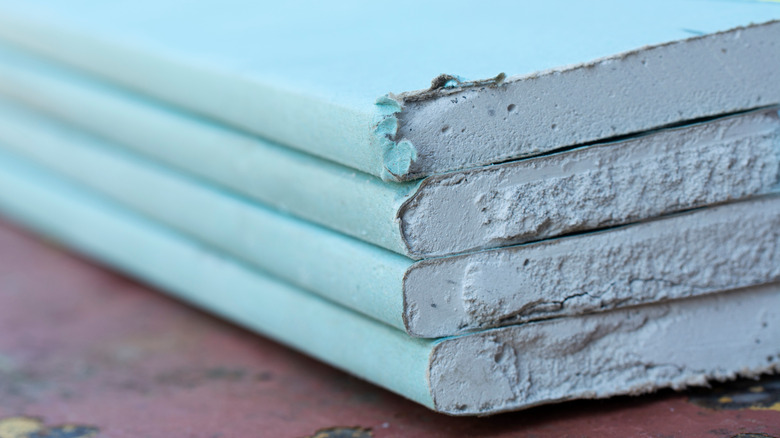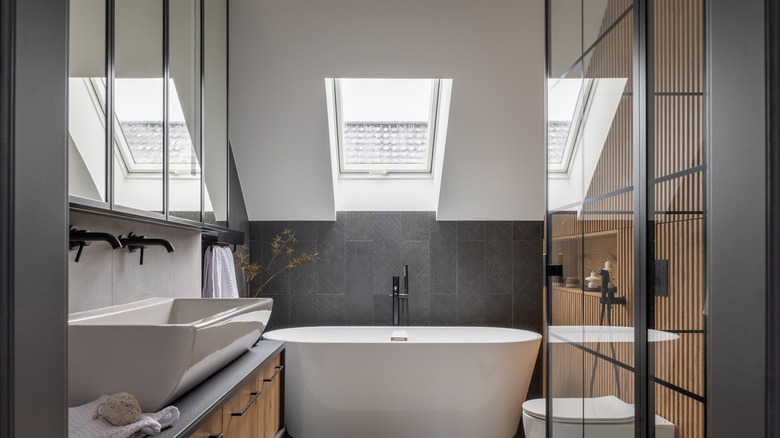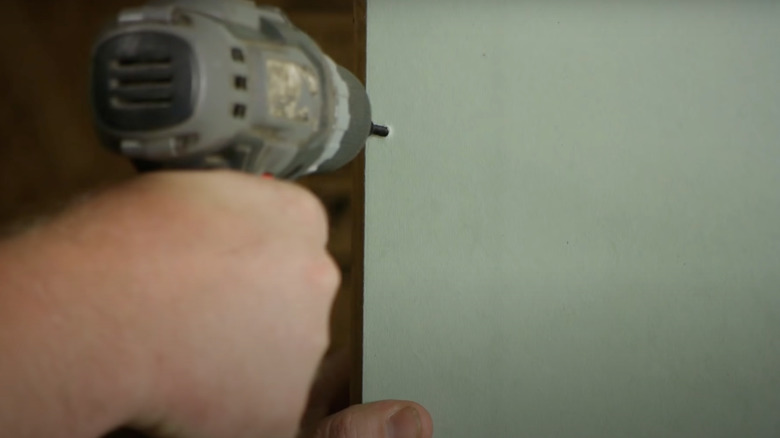A Construction Expert Explains What Green Board Drywall Is And When To Use It
There is more than one type of drywall, and knowing which is best for your space will ensure your home withstands the test of time. Jon Weist from Ripped Jean Construction laid out what makes green board drywall different from regular material. Speaking exclusively to House Digest, Weist explained, "Green board is an informal term for moisture-resistant drywall. Originally, the paper face was green to distinguish it from regular drywall."
Companies that create green board drywall have progressed from simply adding moisture resistance to implementing 'anti-mold' technologies. Now, people can find a variety of different board colors that represent the additional protections they offer, including purple and blue. Weist notes that there is a plaster-made material that also comes in blue, so it is important to know the distinction, as blue board doesn't serve the same purpose as green or other hued drywall. He also took the time to shed some light on why green board drywall is useful and where to place it.
What makes green board different?
When it comes to areas of your home that experience moisture, such as bathrooms, your basement, and the kitchen, Weist told House Digest that green board drywall could be better compared to regular drywall. This is due to the fact that water vapor and humidity can be detrimental to your walls over time. "The paper face (used in green board drywall) includes additives that prevent moisture from getting inside, which in turn would create the conditions for mold growth (organic material + moisture = mold)." The less moisture that creeps into your foundations, the longer they will last. You can also avoid mildew and bacteria found in mold, which can harm humans or aggravate allergies and breathing issues.
One major downside to incorporating green board panels is the price: they can bring your cost up by 50% more than standard drywall. However, Weist notes that "...a project involving only a room or two, the cost difference will be minimal, and well worth the peace of mind." If you have smaller bathrooms or notice one room in particular that boasts more water-based appliances or doesn't have good ventilation, these are the spaces to add in green board drywall.
Tips for using green board drywall
Before installing, it's always good to know what to expect from your drywall. Weist also added during his conversation with House Digest that "green board finishes just like regular drywall. It's a good choice for any moisture-prone area in your home." While it works harder to protect your interiors, the overall appearance is flawless and aesthetically pleasing.
It's important to keep in mind that water vapor or humidity resistance isn't the same as waterproof — flooding or other issues could still negatively impact this material, and will likely require replacement. The best practices for avoiding moisture damage include adding ventilation fans in your rooms and keeping furniture apart from the walls to allow proper air circulation. These tactics will also help the green board drywall do its job, keeping your home safe from negative, moisture-induced elements. This type of drywall is just as easily installed as the standard version and can be done by a professional or during a DIY renovation.


